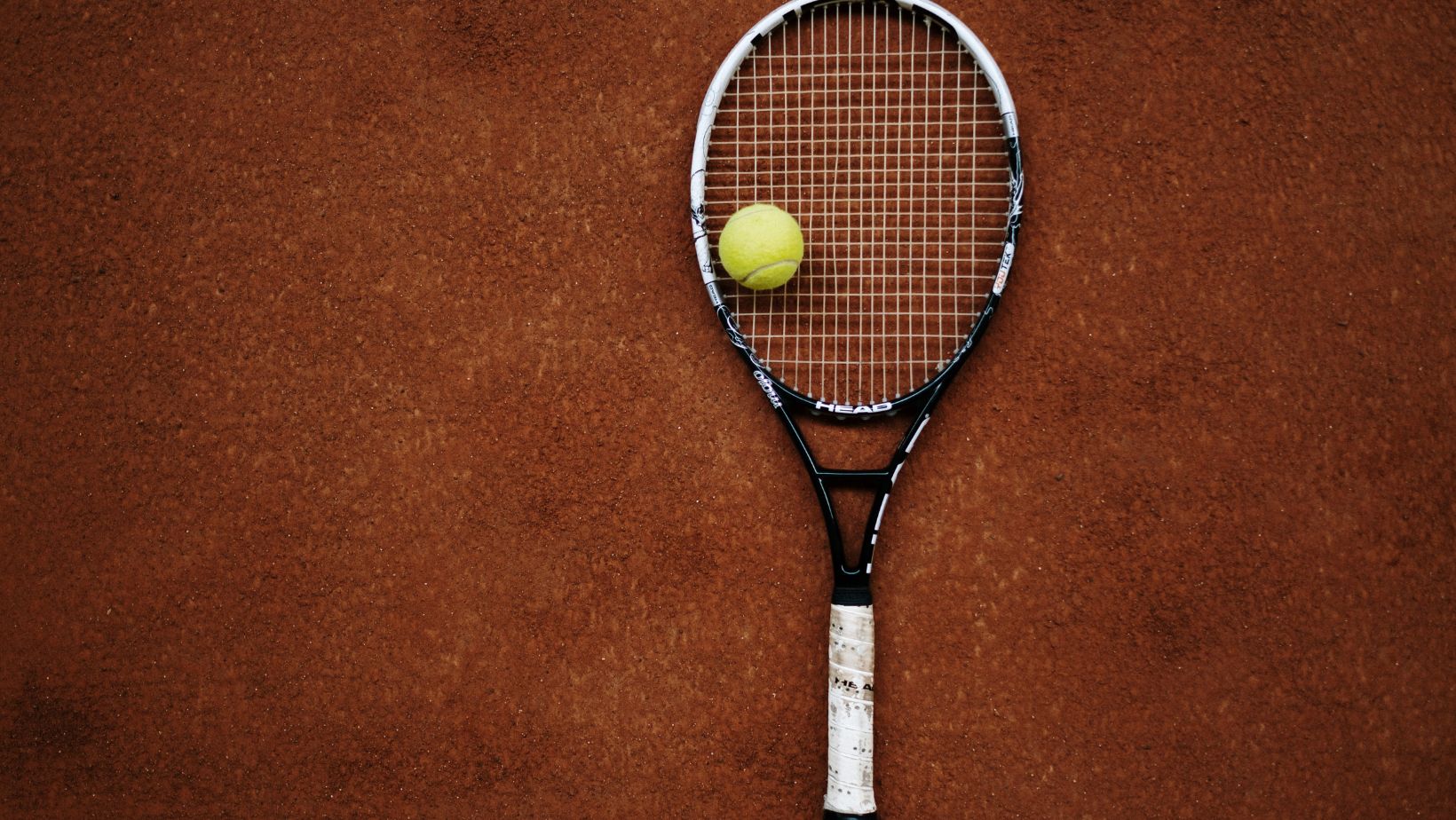
Tennis racket strings act like the heart of your racket, making every shot responsive and precise. When you swing with proper tension, those thin fibers grip the ball and send it exactly where you aim. Without good quality strings, even the best racket loses its edge, leaving your strokes dull and your control off. These strands also absorb shock, helping protect your arm during hard hits and long matches. Understanding how they work can help you choose the right setup to boost power on the court.
Understanding Tennis String Types
Synthetic Gut Tennis Strings
Made from nylon fibers, these strings provide moderate power and control, making them a solid pick for beginners and club competitors. They deliver a consistent response over several sessions, and most rackets handle them without issue. While their feel is not as plush as top-end materials, their even tension helps players learn strokes faster.
Natural Gut Strings
These stand out for their unmatched string tension for power. Crafted from premium materials, these strings offer exceptional energy return at contact, helping shots feel more vibrant and lively. Their high shock absorption protects your arm during long rallies and heavy hitting, making them a go-to for players with arm sensitivity. Although they come with a higher price tag and require more care in humid conditions, their blend of softness and explosive response gives top competitors an edge.
Polyester and Multifilament Strings
Polyester fibers deliver excellent tennis string spin potential thanks to their firm, textured surfaces that grab the ball during contact. This helps advanced players produce sharper topspin and slice shots with greater consistency. On the other hand, multifilament strings, made from many nylon filaments woven together, mimic the softness of natural gut while preserving power and resilience.
Hybrid String Setups
By using durable tennis strings as the main material in the crosses, hybrids provide players with a strong backbone that resists fraying while maintaining touch. This pairing extends overall string life and allows you to tweak tension in each direction for precise control. It also softens the impact on your arm compared with all-polyester layouts. For those seeking resilience, hybrid jobs deliver custom performance benefits that single-material options cannot match.
Key Factors That Affect String Performance
Tennis Racket String Gauge
The thickness of your string influences how long it lasts and how it plays. A lower-number gauge means a thicker fiber, which resists wear and helps prevent frequent breakage, ideal for players who hit hard. Conversely, a higher-number gauge produces thinner strands that bite into the ball more, boosting spin but sacrificing some lifespan. If you face constant string snapping or excessive movement, switching gauges can balance your needs. Beginners often prefer durability to avoid constant repairs, while advanced players might choose thinner lines for extra bite. Always test different tennis racket string gauge options to find the best match for your style.
Tennis String Tension
Lower tensions stretch more on contact, launching the ball faster but with a less predictable trajectory. Higher tensions offer a firmer bed that delivers pinpoint placement and greater feedback, though at the cost of reduced pop. Most recreational players set tension between 50 and 60 pounds, but you can tweak a few pounds above or below to suit court surfaces or playing conditions.
String Bed Stiffness and Its Impact
A stiff string bed rebounds the ball quickly, favoring flatter shots and quicker recovery between strokes. However, it can also transmit more vibration to your arm, potentially increasing fatigue over long matches. A softer bed absorbs shock, offering a cushioned sensation and richer feedback at impact, which supports touch shots and delicate volleys. Monitoring tennis string performance under different setups will guide you toward a comfortable yet responsive string bed.
Environmental Conditions and Their Effects
Outdoor factors, such as humidity, temperature, and sunlight, alter how strings behave over time. High heat can loosen tensions slightly, reducing control on hot days, while cold temperatures can make certain materials rigid and brittle. Moisture from heavy dew or rain seeps into nylon fibers, altering the feel and causing the fabric to warp. These shifts affect string movement and tension stability, prompting more frequent adjustments. Some players switch to specialized lines designed for damp courts. By understanding tennis string options suited for your local climate, you can maintain reliable performance throughout every season.
Tennis Stringing Techniques Explained
How to String a Tennis Racket
Following a reliable step-by-step method ensures optimal string tension, symmetry, and long-term performance. Here’s a clear guide:
- Prepare Your Equipment: Before beginning, gather your stringing machine, chosen string set, cutting tool, awl, and starting clamp. Measure the correct length of string—typically 40 feet for a full restring.
- Mount the Racket Securely: Place your racket in the machine using the mounting arms or posts to hold it firmly. Avoid overtightening to prevent damaging the frame.
- String the Mains First: Begin with the center two vertical strings. Thread both ends evenly through the center grommets and pull them tight using the machine. Work outward, alternating left and right to keep tension even.
- Add the Cross Strings: After finishing the mains, weave the crosses over and under the vertical strings, starting from the top or bottom, depending on the pattern. Pull to the designated tension after threading each one.
- Secure the Knots: Once all strings are in place, tie off the final ends with secure knots to maintain tension. Use a starting clamp if needed to reduce tension loss near the tie-off points.
You may maintain the string responsiveness required for optimal performance and keep your racket in great condition by learning and using proper stringing procedures.
Common Stringing Patterns
String patterns refer to the number of main and cross strings in your racket, commonly labeled as 16×19 or 18×20. Open patterns like 16×19 have fewer crosses, which allow the ball to sink deeper into the string bed, enhancing topspin. Dense patterns like 18×20 provide a firmer feel and better directional control. Each has pros and cons depending on your style and frequency of play. Some rackets offer specialty patterns that strike a balance between the benefits of both.
Innovations in Tennis String Technology
Coated and Reinforced Strings
Durability has long been a concern for frequent players, particularly those who play with force or multiple times a week. Coatings add a slick surface that reduces friction, allowing the strings to snap back faster after contact, which in turn extends their usable life. Reinforced fibers also withstand high tension levels without stretching excessively.
How Advanced Strings Deliver Consistent Performance
Consistency is key to developing a strong game, and advanced tennis string technology helps maintain a reliable feel across every match. Earlier strings would lose their responsiveness after just a few sessions, causing players to compensate and adjust mid-game. With today’s technologies, manufacturers have introduced chemical stabilizers, weather-resistant coatings, and elastic memory fibers that help strings return to their ideal shape more effectively.
Comfort, Maintenance, and Replacement Tips
Signs It’s Time to Replace Your Tennis Strings
As you continue to use your racket, your strings inevitably wear down—even if they don’t visibly break. Here are key indicators that your strings may need replacement:
- Loss of Control – If your shots are suddenly flying long or falling short with no change in your technique, it could mean the tension has dropped.
- Dull or Dead Feel – When the ball feels flat or lifeless on impact, your strings may have lost their natural rebound qualities.
- Fraying or Notching – Visible wear, such as frayed fibers or grooves at string intersections, is a clear sign of aging.
- Excessive String Movement – Strings that shift easily and don’t snap back into place suggest weakened elasticity.
Recognizing these symptoms and responding quickly ensures your tennis racket string replacement is done before it affects your performance or comfort.
How Often to Re-String Based on Play Frequency
A common rule of thumb is to restring as often as you play per week. For example, if you hit the court twice a week, restringing about every six months keeps your strings fresh. High-level competitors or aggressive hitters may need to replace strings monthly or even more often. Strings also wear down more quickly in hot or humid climates, where tension drops rapidly. Prioritizing tennis string comfort can help extend your play sessions and reduce injury risk.
Choosing the right string setup for your game is about more than just picking a brand or material—it involves tailoring every detail to your playing habits, physical needs, and court preferences. Power players may thrive with lower tensions, while control-focused competitors benefit from tighter patterns. Softer strings designed for shock absorption may be a better fit if you prioritize smooth feel and long matches. Each player has a unique rhythm, and the perfect combination supports that without causing discomfort or strain. Thoughtful use of the best tennis strings can elevate performance and make every stroke more effective and satisfying.








